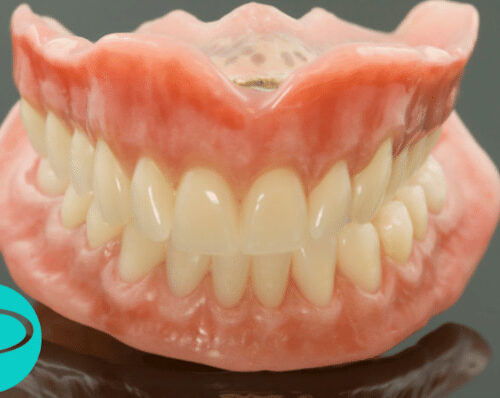Root Canal vs Extraction

Taking care of your teeth is a lifetime commitment, but sometimes we are not perfect at keeping every tooth pearly white and healthy. When the buildup of decay is too great, you may need to seek a dental procedure to fix the cavities that have formed. However, figuring out which procedure is best for you and your teeth can take time and effort.
There are two options for a deep cavity forming in your teeth: a root canal procedure or a tooth extraction. Sometimes, both options may be viable.
To understand which treatment you may need, this article will outline the differences between the two procedures, as well as the benefits and risks that come with them.
What is Root Canal Surgery?
If your tooth has decayed enough to have an infected pulp, you will require an immediate dental procedure to treat the tooth. A root canal procedure, also known as an endodontic treatment, is one of the most recommended treatment options for an infected tooth. It aims to maintain your tooth’s function and aesthetic, even as the infection is removed.
It is called a root canal procedure, as an infected pulp is found within a tooth’s root canals, where the nerves and blood vessels also reside and reach down into the tooth’s root. If an infection sets in, you will begin experiencing pain around the affected area, which can turn to further complications if left untreated.
The tooth will be drilled into the pulp and cleansed of the infection, after which anti-inflammatory medicine is applied. Then the hole is filled with a rubber-like sealant called gutta percha to prevent bacteria and saliva from getting in and causing a re-infection.
To finish off a root canal, a temporary dental crown or filling will be placed on the tooth for 1-2 weeks before a permanent one can be placed. This is to allow the site time to heal and give a timeframe to address any re-infections.
Most procedures are completed within the hour, but teeth with more root canals, like your back molars, may require more time. If the compromised tooth is severely infected, you may need to come back for multiple treatments to ensure the tooth is as healthy as possible.
How Do You Know If You Need a Root Canal?
You will know that you need root canal treatment if you are experiencing these common symptoms:
- Intense pain whenever pressure is applied to the tooth, especially when you bite down on something or chew solid foods
- The pain does not disappear even when painkillers are taken
- The gum area around the tooth is swollen and/or dark
- Facial swelling
- Discolouration, cracking, chips or holes in the tooth
- Sensitivity to temperatures or sweetness when eating or drinking
- Loose tooth
- Next to the tooth, an abscess forms, which looks like a pimple
Unfortunately, if you are experiencing these symptoms, an infection has already set into your tooth. This means the only option to take is to remove the dental pulp, so it does not continue to spread and cause further problems.
What is a Tooth Extraction?
Often the last resort to any dental issue, tooth extraction is where the affected tooth is too damaged to be saved and must be removed. While root canal treatment is always considered first to save the tooth you already have, sometimes tooth decay is too significant for root canal treatment.
Other reasons tooth removal can be necessary are gum disease, wisdom teeth, or insufficient space in your mouth for your teeth to grow properly. If your dentist does not see any other method to resolve these issues, they will advise you to begin the tooth extraction process.
How Do You Know When You Need a Tooth Extraction?
Once the pulp damage inflicted on your tooth goes beyond what can be fixed through root canal treatment, a tooth extraction will be necessary to stop the decayed tooth from causing severe issues.
However, tooth extraction occurs not only when there is severe damage to the pulp. Your dentist may recommend a tooth to be extracted when your teeth have been:
- Impacted, also known as stuck in the jaw bone
- Severely damaged by trauma
- Unable to heal after a root canal procedure and is infected once more
What is the Difference Between Root Canal and Extraction?
When determining if you require root canal treatment or the tooth is to be extracted, your dentist will assess your teeth visually and by using x-rays. This will show them the areas that require treatment and whether or not the severity of the issue will require multiple root canal procedures or immediate extraction.
When looking at the differences in root canal vs extraction, the dentist will not only factor in the circumstances of your teeth, but also your own personal concerns or questions. Before discussing which procedure to undergo with the dentist, you can also ask yourself these questions to see if you are up for local anesthesia and treatment on your root canals or if you are invested in getting the surgery to extract your teeth:
What Procedure are You Most Comfortable With?
If your dentist has informed you that either method is viable for addressing your issue, it comes down to which one you are most comfortable with.
You may be uncomfortable with having a tooth extracted and needing to be replaced. However, at the same time, you may not like the idea of a surgical procedure involving drilling.
If you are unsure which method you would be most comfortable with, you should discuss both processes with your dentist to get a full picture of what you will be undergoing. To help guide your decision, here are some responses to common questions we encounter at the clinic.
What Tools are Used?
Root canal treatments are relatively simple with the usage of tools. It involves drilling into the tooth to expose the infected pulp and after scraping out the infection, the hole is filled with a rubber-like material.
However, several different tools are used in the process when it comes to tooth extraction. This includes a special tool called a scaler, which prevents further infection by scraping away plaque. However, the procedure involves curettage, root planing, and suturing or stapling. If you are comfortable with using these tools, then extraction can be viable.
Are You Okay with Numbing Agents?
Both procedures use numbing agents before treatment, so you must be okay with being injected with local anaesthesia to undergo either. Since the root canal treatment is lengthier than a tooth extraction, you may require multiple applications of a numbing agent.
How Severe is the Tooth Decay or Infection?
Even if you wish to undergo root canal treatment, if the infection or decayed tooth is untreatable, you may have no option but to have it extracted. If the issue is not too bad, however, you can have more freedom to choose between the two procedures.
Is there an Exposed Nerve?
In the case of the pulp being so damaged it cannot heal without the nerve being removed, extraction is necessary to prevent further issues. Root canal treatment is not viable in this instance.
How Much of the Tooth is Affected?
The amount of the tooth that is decaying or infected also denotes which procedure can be used. If most of the tooth is compromised, you would have no choice but to have it extracted.
Are there any Health Concerns that May Impact the Procedure?
If you have a condition that puts you at a higher risk of infection after a procedure or has a poor healing factor, this can cause your dentist to recommend an extraction after over-treating your root canal. Compromised immunity, diabetes and cardiovascular disease are just a few conditions that may alter your choice.
Despite this, a root canal may still be recommended if the possible risks outweigh the benefits of saving the tooth.
Is It Better To Get a Root Canal or an Extraction?
In the end, the best option is recommended by your dentist. They aim to prevent you from feeling pain or discomfort and prevent the infection or decay from spreading to your other teeth. Their opinion is vital to deciding whether you want your root canals addressed or the tooth extracted.
For those invested in maintaining their natural smile, a root canal is the best option, as you do not have to replace an extracted tooth. However, if you are at risk of more pain and the spread of bacteria, you may have no choice but to get your tooth pulled.
The severity of your case will usually dictate which option is necessary, but the decision can still be difficult in cases where you can choose what can be done. Do not hesitate to ask your dentist any additional questions; your comfort should come first, along with your health.
How to Avoid Root Canal Treatment or a Tooth Extraction
To avoid the entire process of choosing which procedure to choose for your teeth, you should always practice good dental hygiene through preventative care.
This preventative care includes:
- Brushing twice daily with a soft toothbrush and fluoride toothpaste to get rid of bacteria or plaque buildup. Make sure to clean along your gum line to prevent gum disease.
- Floss daily to remove the bacteria between your teeth.
- Limit your exposure to sugary and sweet foods.
- Drink lots of water, especially after meals, to wash away sugary residue.
Finally, you should book in for a regular dental check-up and clean. At Putney Dental, you can contact us for an appointment online or by phone at (02) 9808 2588.
Gum Boil Explained Signs of Infection After Root CanalLatest from the Dental Blog
 27 Nov 2017
27 Nov 2017
No Dental Care Issues? See Your Dentist Still
So you may not have a nagging toothache or need your wisdom teeth removed. As with most people, brushing your…
 28 Feb 2023
28 Feb 2023
A Guide to Your White Gums
Everyone aspires for a bright white smile, but white gums? Not so common. Healthy gums are usually pink, but if…
 30 Nov 2018
30 Nov 2018
How To Keep Your Child’s Teeth Healthy
As a parent, you have a lot to think about. Not only do you have to worry about your own…
